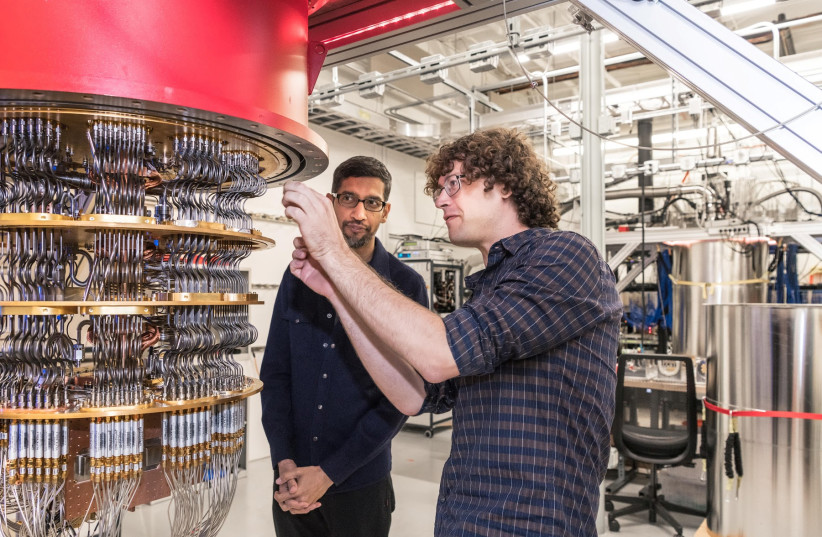In a new experiment, an international team of scientists has managed to link two time crystals, which may be useful in quantum computing.
A time crystal, first proposed by physicist Frank Wilczek in 2012, is a phase of matter which repeats in time, similar to how a regular crystal's structure repeats in space. What that means is that the particles in the crystal perpetually switch between two states without requiring the input of more energy and without losing any energy.
These crystals are the first objects to break what is known as "time-translation symmetry," a rule in physics that says that a stable object will remain unchanged throughout time. Time crystals violate this rule, being both stable and ever-changing.
So, for example, ice when stable will remain ice and will only change when temperature or another factor makes it unstable. A time crystal changes even when in its ground state, however, acting differently than all other phases of matter.
The scientists from Lancaster University, Royal Holloway London, Landau Institute and Aalto University in Helsinki published their work in Nature Communications earlier this month.

“Everybody knows that perpetual motion machines are impossible," Dr. Samuli Autti, lead author of the study from Lancaster University’s Department of Physics, said in a press statement. "However, in quantum physics, perpetual motion is okay as long as we keep our eyes closed. By sneaking through this crack we can make time crystals.”
"In quantum physics perpetual motion is okay as long as we keep our eyes closed. By sneaking through this crack we can make time crystals."
Dr. Samuli Autti of Lancaster University’s Department of Physics
In order to make the time crystal system, the researchers brought a helium-3 superfluid (a state of matter which acts as a fluid but flows without friction) to one-thousandth of a degree above absolute zero (-273.15°C), according to an article on Aalto University's website.
The researchers then created two-time crystals within the superfluid. They were able to survive for a few minutes, which is a very long time for the quantum phenomenon. Within the fluid, the crystals formed a two-level quantum system, in which two independent quantum states were able to occupy both states simultaneously.
"The time-crystals we created are different from each other in the sense that one changes its frequency in time, whereas the other doesn’t," explained Aalto researcher Jere Mäkinen. "During the experiment, we were able to make their frequencies intersect. When their frequencies are about the same, they interact and a part of each one's amplitude moves over to the other crystal.
"In our second experiment, the crystal that remained regular was ‘empty’ at the beginning, i.e., its amplitude was zero," Mäkinen said. "When the frequency of the other crystal crossed with the empty one, a part of the amplitude moved to it precisely in the way that the theory describing two-level quantum systems predicted."
These two-level quantum systems could be used like a qubit, the quantum computer equivalent to the bit used in standard computing. While a bit has a value of either a one or zero, a qubit can have both at the same time, leading to faster computing.
What's next?
While this time crystal system required an extremely cold superfluid to exist, other studies have shown that time crystals can exist at room temperatures, meaning that there may be a way to make this system work at such temperatures as well. This could lead to quantum computing devices that can operate in room temperature environments.
In March, researchers from the University of California, Riverside, used light to allow time crystals to survive in room temperature conditions.
The UC Riverside time crystal is made out of a one-millimeter wide, disk-shaped magnesium fluoride glass resonator. When the disk is bombarded with two laser beams, the researchers observed subharmonic spikes (frequency tones between the two beams) which indicate the breaking of temporal symmetry and the creation of time crystals.
The scientists picked a particular resonator design and precisely controlled the laser beams to cause light waves to be created with a single crest, instead of like ripples like most forms of light, according to Scientific American. Such waves are called solitons, and scientists were able to create them with a predictable periodicity – on beat, creating a time crystal.
Speaking to Scientific American, lead author Hossein Taheri stated that one observing the resonator would see periodic variations in the outgoing light's intensity until, at some point, a light intensity pattern would spontaneously emerge with a very different periodicity set by the solitons. This would show that the system was in a way "setting its own time," thus creating a time crystal.
The system created by UC Riverside is unique because its random losses of energy, as well as the encroaching noise (similar to static), actually increased its stability. The system also requires relatively few parts to make.
